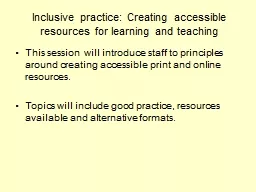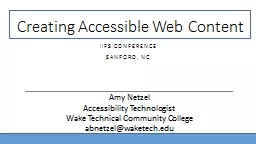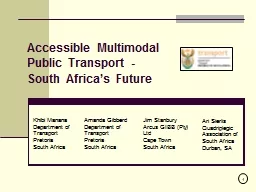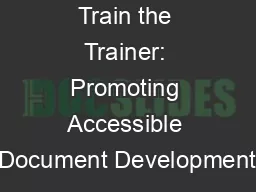PPT-Accessible Data Advanced
Author : carla | Published Date : 2022-06-01
Data Model Presented By Virginia DeCeglia Chris Shaffer Date Prepared May 2015 Agenda Data Model Overview Database Navigation Frequently Accessed Areas Timeslices
Presentation Embed Code
Download Presentation
Download Presentation The PPT/PDF document "Accessible Data Advanced" is the property of its rightful owner. Permission is granted to download and print the materials on this website for personal, non-commercial use only, and to display it on your personal computer provided you do not modify the materials and that you retain all copyright notices contained in the materials. By downloading content from our website, you accept the terms of this agreement.
Accessible Data Advanced: Transcript
Download Rules Of Document
"Accessible Data Advanced"The content belongs to its owner. You may download and print it for personal use, without modification, and keep all copyright notices. By downloading, you agree to these terms.
Related Documents














